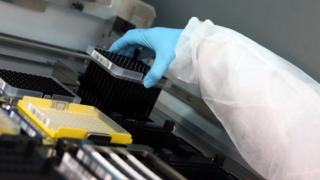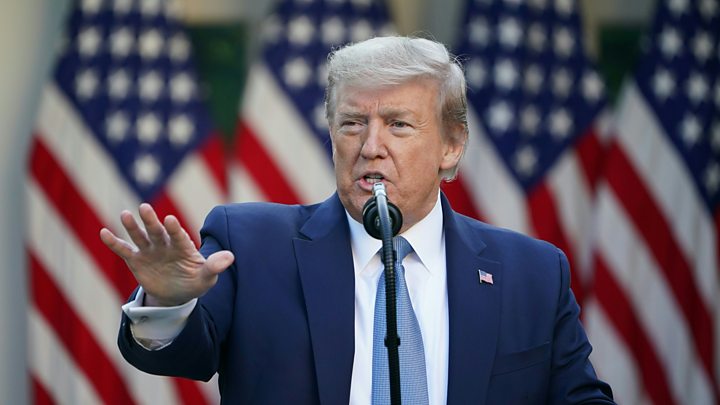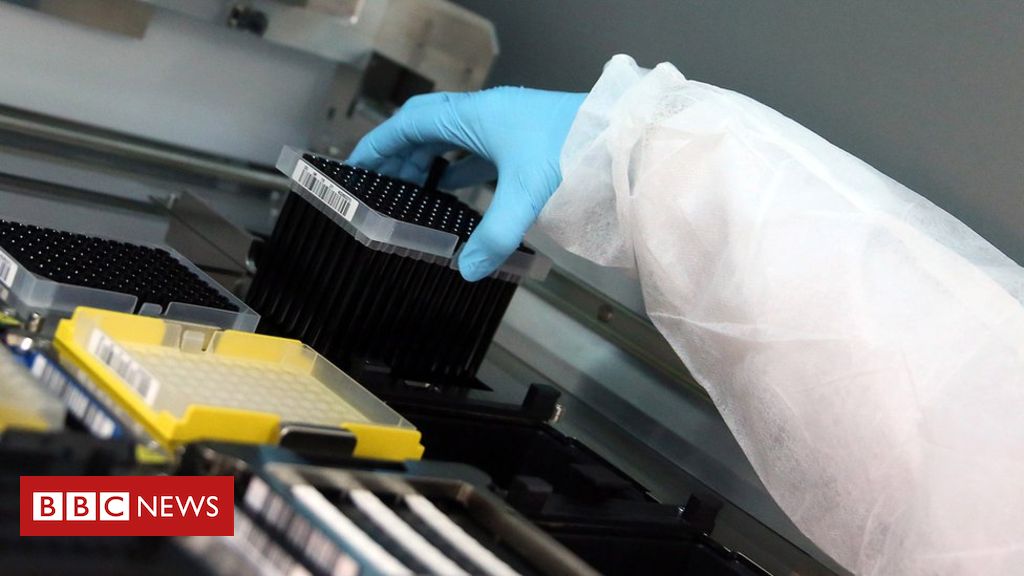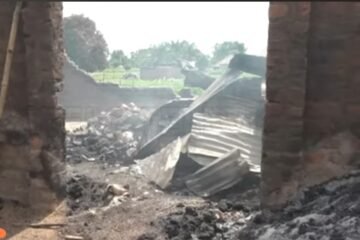 Image copyright
Image copyright
EPA
A scientist tests for coronavirus at a lab in Greece
US state department cables show that embassy officials were worried about biosecurity at a virus lab in Wuhan, China. The lab is in the same city where the coronavirus outbreak first came to the world’s attention.
And President Donald Trump has said the US government is looking into unverified reports that the virus escaped from a laboratory.
So what, if anything, does this add to our understanding of the current pandemic?
What do the cables say?
The Washington Post newspaper has reported information obtained from diplomatic cables. They show that, in 2018, US science diplomats were sent on repeated visits to a Chinese research facility. Officials sent two warnings to Washington about inadequate safety at the lab.
The column says the officials were worried about safety and management weaknesses at the Wuhan Institute of Virology (WIV) and called for more help.
It also claims diplomats were concerned the lab’s research on bat coronaviruses could risk a new Sars-like pandemic. The newspaper says the cables fuelled more recent discussions in the US government about whether the WIV or another lab in Wuhan could have been the source of the virus behind the current pandemic.
In addition, Fox News has also issued a report promoting the lab origin theory.

Media playback is unsupported on your device
The outbreak came to light late last year when early cases were linked to a food market in Wuhan. But despite rampant online speculation, there is no evidence of any kind that the Sars-CoV-2 virus (which causes Covid-19) was released accidentally from a lab.
What kind of security measures do labs use?
Laboratories studying viruses and bacteria follow a system known as the BSL standards, where BSL stands for Biosafety Level.
There are four levels, which depend on the types of biological agents being studied and the containment precautions needed to isolate them.
Biosafety Level 1 (BSL-1) is the lowest and is used by labs studying well-known biological agents that pose no threat to humans.
The containment precautions increase through the levels until you arrive at Biosafety Level 4 (BSL-4) which is the highest, and reserved for labs dealing with the most dangerous pathogens for which there are few available vaccines or treatments: ebola, Marburg virus and – in the case of just two institutes in the US and Russia – smallpox.
The BSL standards are applied internationally, but with some cosmetic variations.
“The Russians, for instance, label their highest containment labs as 1 and the lowest containment labs as 4, so the exact opposite of the standard, but the actual practices and infrastructure requirements are similar,” says Dr Filippa Lentzos, a biosecurity expert at King’s College London.
Image copyright
EPA
Laboratories like this one in Hungary follow a system of standards with four levels. These levels are based on the precautions needed to handle different pathogens
But while the World Health Organization (WHO) has published a manual on the different levels, the standards are not enforced by any treaties.
“They’ve been developed to be in the best interest for working safely, for lab workers who don’t want to infect themselves or their community, and for the environment to avoid accidental releases,” says Dr Lentzos.
But she adds: “The ‘stick’ comes with the purse strings. If you want to do projects with international partners they require labs to be operating to certain standards. Or if you have products to sell in the market, or perform certain services, e.g. tests, then you are also required to operate to international standards.”
Indeed, the WIV had received funding from the US, along with assistance from American research institutes. The cables recommended giving them even more help.
What kinds of security failures were the cables describing?
The short answer is that we don’t know from the information provided in the Washington Post. But, generally-speaking, there are multiple ways that safety measures can be breached at labs dealing with biological agents.
According to Dr Lentzos, these include: “Who has access to the lab, the training and refresher-training of scientists and technicians, procedures for record-keeping, signage, inventory lists of pathogens, accident notification practices, emergency procedures.”
Image copyright
Reuters
A number of early cases in the pandemic were linked to the Wuhan Seafood Market
But how unusual were the concerns expressed in the diplomatic cables?
Accidents happen. In 2014, forgotten vials of smallpox were found in a cardboard box in a research centre near Washington. In 2015, the US military accidentally shipped live anthrax samples instead of dead spores to as many as nine labs across the country and a military base in South Korea.
There are variations in safety standards across the large number of labs at the lower end of the BSL scale and many lesser breaches don’t make it into the news.
But there are relatively few labs that are designated BSL-4. Wikipedia lists over 50 around the world, of which WIV was one, but there is no authoritative list.
They have to be built to very high specifications because they deal with the most dangerous pathogens known to science. As a result, they generally have good safety records. So any concerns about procedures at one of these facilities would be more than noteworthy.
Weren’t there previous claims of the virus leaking from a lab?
Yes, almost as soon as the novel coronavirus came to light, there was speculation – much of it uninformed – about its origins.
One online theory, that went viral in January, suggested the virus could have been engineered in a lab as a bioweapon. This allegation has been repeatedly dismissed by scientists, who note that studies show the virus originated in animals – most likely in bats.
Viruses can also be engineered for the purposes of fundamental scientific research. For example, gain of function studies may improve the ability of a pathogen to cause disease, to investigate how viruses could mutate in future.
But a US study of the coronavirus genome published in March found no signs that it had been engineered. “By comparing the available genome sequence data for known coronavirus strains, we can firmly determine that SARS-CoV-2 originated through natural processes,” said co-author Kristian Andersen, from Scripps Research, said at the time.
Another allegation concerns the accidental release of a natural virus from a laboratory. The proximity of the Wuhan seafood market, where the outbreak came to light, to at least two research institutes carrying out research on infectious diseases fuelled speculation about a link.
Image copyright
SPL
The virus is thought to have originated in wildlife – most likely in bats
That the WIV had carried out research on bat coronaviruses is a matter of public record. This work was entirely legitimate and published in international journals. Given the country’s experience with the Sars outbreak in the early 2000s, this should come as no surprise.
Dr Lentzos said the issue of its origin was a “very difficult question”, and added that “there have been quiet, behind-the-scene discussions… in the biosecurity expert community, questioning the seafood market origin that has come out very strongly from China”.
But there is currently no evidence that any research institute in Wuhan was the source of Sars-CoV-2.
On Thursday, China foreign ministry spokesman Zhao Lijian addressed the matter at a news conference, telling journalists the World Health Organization’s officials “have said multiple times there is no evidence the new coronavirus was created in a laboratory”.
President Donald Trump, who has been coming under fire over his administration’s response to the pandemic, said the US government is investigating the lab theory.
China has repeatedly been accused of lacking transparency in the early stages of the outbreak, and Secretary of State Mike Pompeo has said Beijing “needs to come clean” on what they know.
Amid this war of words between the countries, the painstaking – and largely unseen – scientific work to trace the origin of the virus will continue.
Follow Paul on Twitter.





… [Trackback]
[…] Read More here to that Topic: famousreporters.com/is-there-any-evidence-for-coronavirus-lab-release-idea/ […]
… [Trackback]
[…] Information to that Topic: famousreporters.com/is-there-any-evidence-for-coronavirus-lab-release-idea/ […]